Above: One of the Ferguson boys posing on their front lawn with the Kingsville jaguar. Valgene W. Lehmann Papers, di_11953, The Dolph Briscoe Center for American History, The University of Texas at Austin
Source: Corpus Christi Caller-Times – April 25, 1948, p. 8 & The Valgene W. Lehmann Papers
On April 25, 1948, page eight of the Corpus Christi Caller-Times unceremoniously reported the killing of a large jaguar on a farm near Kingsville. At the time, they didn’t realize this individual was the last of Texas’s biggest cats. The jaguar was killed by Richard Cuevas, who was out hunting for rabbits on Santa Gertrudus Creek–somewhere near present-day Dick Kleberg Park. The article and transcription are included below.
Note the photo of a small girl on the body of the jaguar. It is an excellent example of the beauty and the beast theme that was often played out in big cat hunting photos from this period. It is also interesting that the author understands the jaguar to be a native species but says that it is “the first that has been seen so near a farm home in some time.”
Cuevas had gone into the brush near the Ferguson home hunting rabbits. He carried only a .410 gauge shotgun, a weapon that is fine for shooting rabbits, but miserably inadequate for big game like jaguars.
Tough Customer: 121-Pound Jaguar Killed on Farm Near Kingsville
Corpus Christi Caller-Times – April 25, 1948

South Texas has everything, even jaguars!
But there is one less jaguar in this area now, after Richard Cuevas, worker on the Bob Ferguson dairy farm near Kingsville, killed one of the big cats recently.
Cueves had gone into the brush near the Ferguson home hunting rabbits. He carried only a .410 gauge shotgun, a weapon that is fine for shooting rabbits, but miserably inadequate for big game like jaguars.
He spotted the big cat crouching behind a cactus plant and without much ado he cracked down on the animal with a charge from his rabbit gun. Stunned, shocked and perhaps blinded by the volley of small shot from Cuevas’ gun, the jaguar began running in circles and soon climbed a tree.
Cuevas, realizing the prowess of his adversary by this time, left the cat up the tree while he went for a bigger gun. At the Ferguson home, which was nearby, Cuevas borrowed a rifle and went back to finish off the jaguar.
Val Lehman, conservationist and wildlife specialist for King Ranch, identified the animal as a jaguar.
The jaguar is among the larger specimens of the feline family, ad its native habitat extends from Texas to Paraguay. It has a larger head, heavier body and shorter, thicker legs than the leopard or the cougar. It is brownish yellow or buff, marked with black spots.
According to Mrs. Sue Ford of Ricardo, the jaguar killed by Cuevas measured 5 feet 10 /12 inches overall. Its maximum belly girth was three feet and it was 30 inches tall. The animal weighed 121 pounds.
The Ferguson dairy farm where the jaguar was killed, is three miles southeast of Kingsville.
When Cuevas was asked if he wasn’t afraid to shoot such a big cat with a .410 gauge shotgun, he said that under the circumstances he figured he could outrun the animal if it showed any inclination to chase him. Fortunately for him the jaguar took to a tree, and Cuevas had time to bring up heavier artillery.
Panthers, large bobcats, lynxes and other members of the feline family are not uncommon in the brush country of South Texas; but the jaguar killed by Cuevas is the first that has been seen so near a farm home in some time.
By the 1940s, no breeding jaguars were left in Texas, so this cat probably came north along the coast from Tamaulipas looking for territory. Valgene Lehmann, the wildlife biologist at the King Ranch, performed the autopsy and described it as “fat as butter,” though its stomach only contained the partial remains of a raccoon. He also noted that Cuevas’s first shot blinded the cat in both eyes, while the second killed it after almost taking off its jaw. What a short and gruesome end to the jaguars’ long history in Texas!
I discovered Lehmann’s original notes, plus the stunning photo used at the top of this post, at the Briscoe Center for American History in Austin, where his papers are archived. There was a wealth of other information there, which I hope to include in future posts.
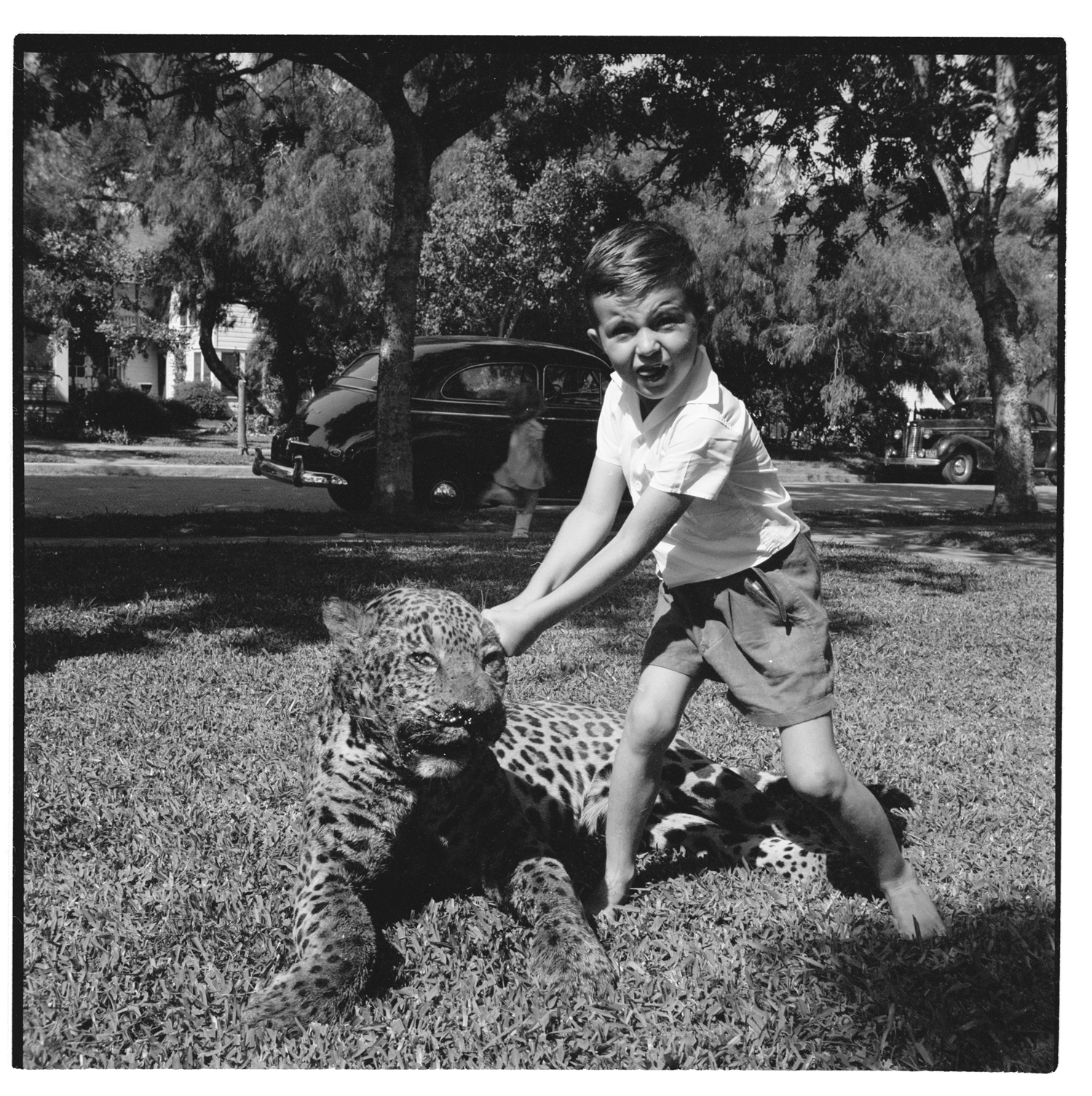
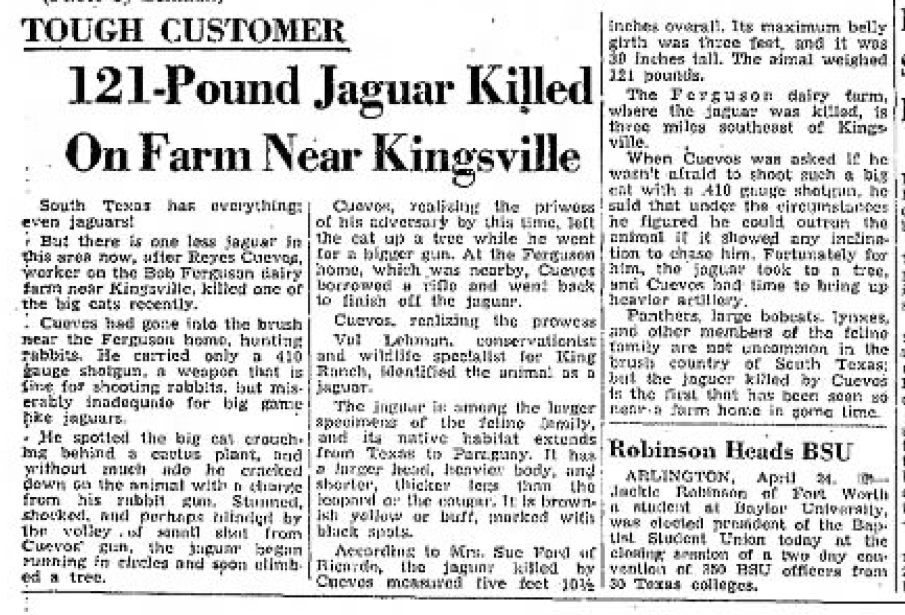
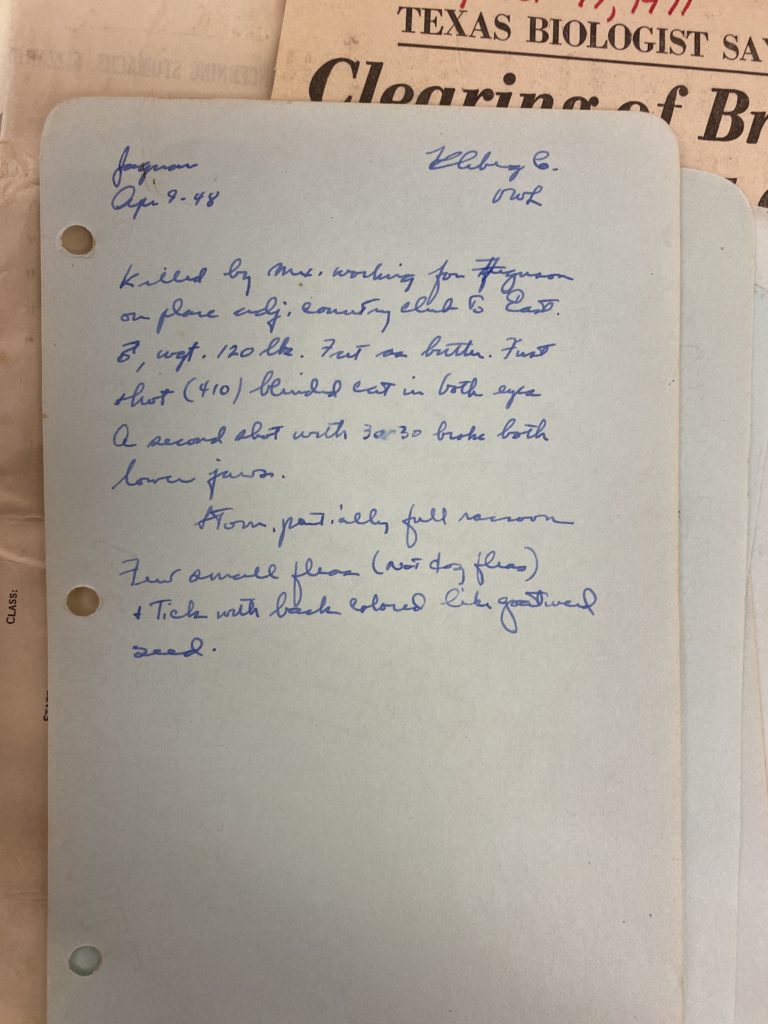
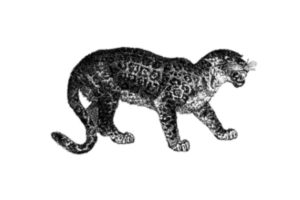
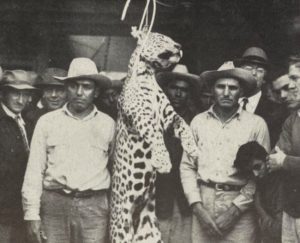
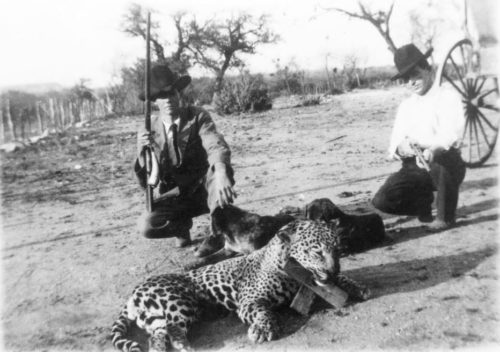
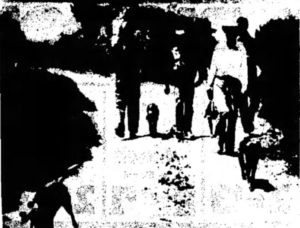
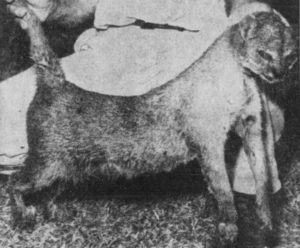
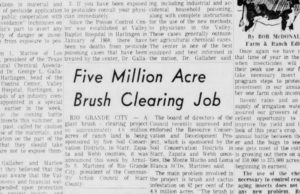
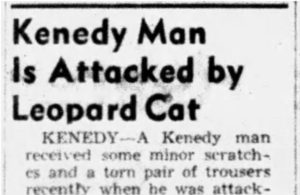
Comments are closed.